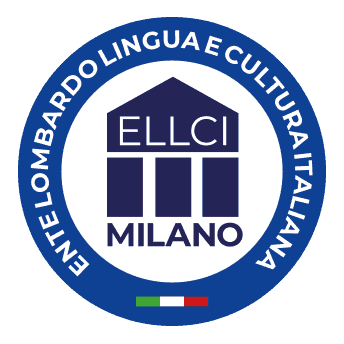
21 Gen
The 6 most difficult things to learn in Italian
How difficult is it for foreigners to learn Italian?
We Italians are used to thinking that our language is very easy to learn and compare with other languages. However, if we stop and think about all the structures we use in each sentence, we realize that this is not quite the case. For example, certain sounds, such as doubles, are not widespread in other languages and therefore difficult to interpret. We must also remember a varied number of concordances of gender and number, a great challenge.
There are languages that are inherently more difficult to learn, but the level of difficulty in learning a language also depends on your mother tongue.
The Italian language is part of the Romance languages, such as French, Spanish and Portuguese. Languages belonging to the Romance family share some of the vocabulary, grammatical forms and certain sounds. It is, therefore, easier to learn a new language if it comes from the same family group. Students who are native speakers of Spanish or French usually have less difficulty learning Italian.
However, there are some aspects of the Italian language that are complicated and bizarre for anyone who studies this language. Let’s see what they are.
Tips for who is learning the Italian language
Here are some aspects of the Italian language that make learning Italian difficult for some people and that require a little more effort on the part of the student.
With just a little study and practice, things will get a lot easier.
6 Hardest Things to Learn in Italian
The gender of nouns
In Italian all nouns, even of things, animals or plants, have feminine or masculine gender.
Gender is absolutely arbitrary, there is no rule that associates, for example, a category of objects with a particular genre.
Knowing the gender of the noun, however, is essential for matching articles and adjectives. For example la sedia è rotta (the chair is broken) – and not – il sedia è rotto.
How to learn the gender of nouns in Italian?
There is a general rule that nouns ending in “-o” are generally masculine, while nouns ending in “-a” are feminine.
Beware of exceptions though! As we will see in the next point, Italian is full of irregularities and exceptions.
For example, photos and radios end with “-o” but are female names. On the contrary, the problem and the cinema are masculine. These exceptions are only learned through study.
Another peculiarity of Italian is that the gender change sometimes involves the transition from singular to plural, for example, il dito/le dita (the finger/the fingers), il braccio/le braccia (the arm/the arms), l’uovo/le uova (the egg/the eggs). A real puzzle!
The irregulars army
Irregulars are everywhere. The exceptions to the rule concern the concordances of nouns from feminine to masculine, from singular to plural, but the greatest of all concerns irregular verbs.
Verbs must be conjugated according to the persons (me, you, him/her, us, you, them) who have their own specific ending for each tense (present, past, future, etc.) and mode (indicative, conditional, subjunctive, etc.).
Many of the most common verbs are irregular, i.e. it is not enough to know the ending, but also how the root changes, eg: andare (to go) -> io vado.
Regional Italians
Italian has a relatively recent history. It was formalized as a language at the beginning of the fourteenth century thanks also to the Italian poet Dante Alighieri who, in his works, used a language composed of the Tuscan dialect and that of other Italian regions, giving rise to the standardization of Italian. This is why it is said that modern standard Italian derives from Tuscan.
Despite the work of standardizing the Italian language, there are still differences in use between region and region, especially between the northern and southern ones, which can create a lot of confusion.
For example, at school they teach you that you never put the definite article in front of proper names, instead of in the northern regions, for example in Milan, you will happen to hear: Esco con la Francesca/I go out with Francesca.
In the northern regions, the passato prossimo tense is used almost exclusively, while in the south the passato remoto is used much more.
- Ieri sono andato in palestra e ho visto Mattia./Yesterday I went to the gym and saw Mattia”.
- Ieri andai in palestra e vidi Mattia./Yesterday I went to the gym and saw Mattia.
In standard Italian, on the other hand, the present perfect is used to describe fairly recent events. The distant past is used for events that are distant in time.
- Ieri sono andata al cinema/ Yesterday I went to the cinema
- Il primo presidente della Repubblica italiana fu Enrico De Nicola/ The first president of the Italian Republic was Enrico De Nicola
Regular pronunciation
Italian pronunciation is one of the easiest aspects to learn. This is because everything is pronounced the same way it is written, and there are no strange exceptions like in English or French.
As a general rule of pronunciation, the emphasis is on the penultimate syllable of the word. Words with an accent on the last letter have a special graphic sign, the accent, which distinguishes them. for example: città, caffè, perchè, ect.
In general, we tend to think that Italian pronunciation does not involve great difficulties because once you have learned the sounds, there are no exceptions or irregularities. In Italian, you can read everything that is written there. With the exception of the H, all letters must be spelt precisely.
However, there are sounds unknown in other languages. For example double consonants. When a consonant is doubled the intonation of the word changes. The vowel preceding the double consonant must be longer, with more inflexion on it.
Other difficult sounds are the pronunciation of the “t” and the “r” and with “gli”.
To learn how to articulate words well, acting and diction teachers recommend exercising the pencil in the mouth. Try repeating simple sentences with a pencil between your teeth.
Prepositions for every taste
The preposition is an invariable part of speech that expresses the link between words and sentences. There are different types of prepositions, simple, articulated, proper or improper with different functions.
Learning to use them seems simple, after all, they are just small words. In fact, there are general rules that indicate, for example, when to use “da”/from instead of “a”./to The problem is that even in this case there are many exceptions and variations of use.
In Italian different prepositions, in simple or articulated form, are used to indicate the movement to a place: in, a, da, tra, su, verso e per.
Usually the verb of motion andare/to go is followed by “a” if the destination is a city; is followed by “in” if the destination is a country:
- Anita va a scuola./Anita goes to school.
- Vado a Firenze. /I’m going to Florence.
- Vado a Parigi. /I’m going to Paris.
- Andiamo in Portogallo. /Let’s go to Portugal.
but if the direction is expressed towards a person, the preposition “da”, which usually expresses origin or provenance, is used.
- Vado dal medico./I go to the doctor.
- Vado da Giulio. /I’m going to Giulio’s.
The subjunctive
It’s well known that the subjunctive is the weak point of many Italians who study it at school, but often in everyday life they no longer know how to use it.
The subjunctive, however, is fundamental to express subjectivity, uncertainty, doubt, will, desire, etc.
The biggest difficulty for native English speakers is that it is virtually non-existent in English. Besides, the rule on how to apply it is not always very clear.
Be careful not to confuse the subjunctive and the conditional.
Both express conditions of doubt and uncertainty. They are distinguished because the subjunctive is usually introduced by conjunctions such as “che”, “se”, “perché”, “affinché”.
The conditional is used to indicate events and situations subject to conditions and after hypothetical propositions introduced by “se + subjunctive”.
- Non credo che tu sia (congiuntivo) in grado di guidare./ I don’t think you are (subjunctive) able to drive.
- Se avessi (congiuntivo) la patente, saresti (modo verbale condizionale) in grado di guidare. /If you had (subjunctive) the driver’s license, you would be (conditional verbal way) able to drive.
How do you feel trying to learn Italian now? More confident or do you still have questions or concerns?
Discover our intensive Italian courses
Discover our evening or Saturday courses for those who are busy during the day
